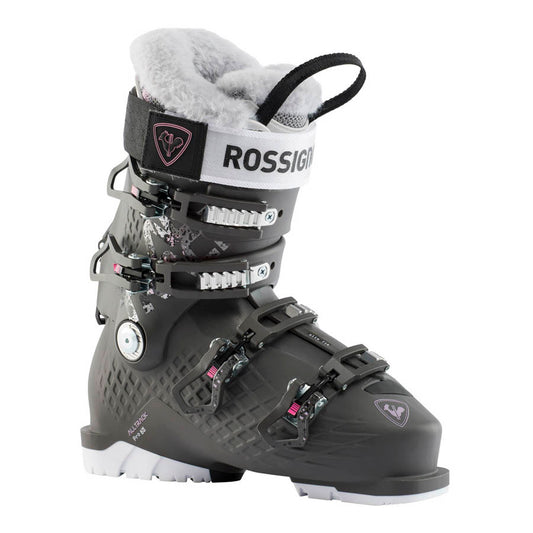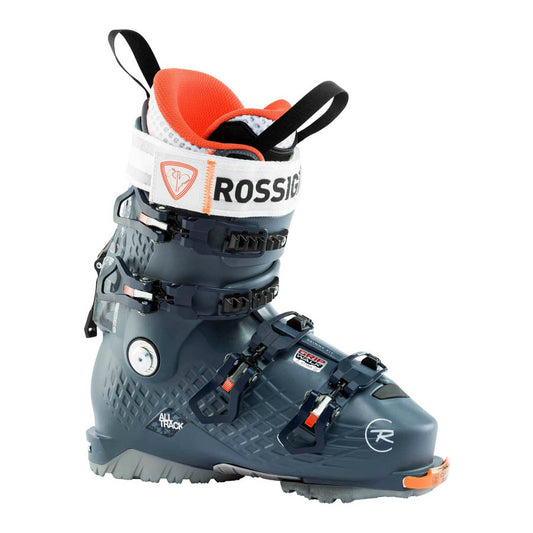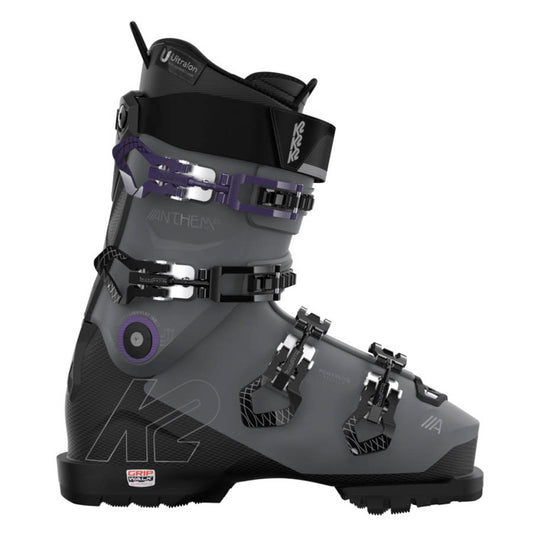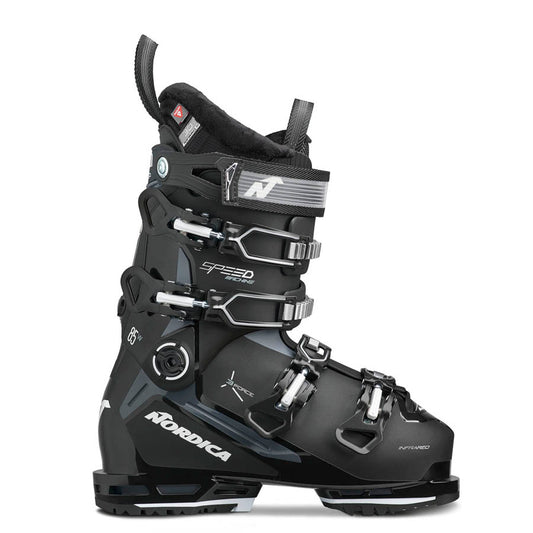Nowadays you have a litany of resources at your disposal to find and gather information on what to look for when shopping for your next pair of ski boots. Well, allow us to add another resource for you and provide some vital and useful expertise so your next ski boots purchase will be less stressful. After all, you will probably spend more time in the same ski boots than on the same pair of skis if you own multiple pairs of skis.



This is likely to be the category or ski boot that you are will most likely come across, but it is not the only one. Downhill ski boots will work with any standard ski bindings.

If you’re a skier who spends the majority, if not all of your time in terrain park or hitting jumps & rails, you will find that Freestyle ski boots are what you’re looking for. Freestyle boots are designed to ski Read more

If you’re an advanced level skier or above and you seek more adventurous terrain on a consistent basis, Side Country ski boots will be perfect for you. Side Country boots offer more grip in the sole and a walk/hike switch Read more

For the most adventurous skiers, Alpine Touring ski boots offer a lightweight design that is easy to hike/climb/skin in. They allow for easy climbing up and down when seeking the most difficult terrain, but it is important to note that Read more
| Narrow | Medium | Wide |
| Widths in this area can range from 95mm-99mm. These are often found in race style boots or high performance boots. They are designed so that trained boot fitters can shape it to match the skier's foot. | Widths in this area can range from 100mm-103mm. Medium last boots are usually found in boots for advanced skiers or performance style ski boots. | Widths in this area range from 104mm-106mm. If you are a recreational skier in most any skill level this is what you are typically going to come across. The width here is intended to provide comfort so that you can enjoy your day skiing no matter the terrain you ski or the skill level you ski at. |
For first timers or skiers who only have skied a few times. These skiers are learning the basics and fundamentals of skiing.
For skiers who have spent a season or so learning and are comfortable with the basics and fundamentals of skiing. They have control over their skis and will sometimes try more challenging terrain. They ski at moderate speeds but remain cautious. As outlined above, beginner level skiers who are slightly heavier in weight may consider boots in this category so that the boot can respond accordingly to the extra power.
For skiers that have mastered the basics and are showing solid technique in their progression. Skiers here make more aggressive turns on groomed runs and will begin to explore off-trail skiing as their comfort and confidence levels continue to increase. Moderate speed skiing is done with minimal caution unless conditions require it.
For skiers with very solid technique on advanced level terrain. They can handle most every snow condition and can do so with relative ease. They often will ski at higher speeds but may do so with some caution depending on conditions.
For skiers who are capable of skiing in control at high speeds safely regardless of snow conditions. They have strong technique, will ski aggressively, and require a boot that will provide the necessary flex and support for the aggressive style.

Simple and straightforward - men’s ski boots are designed for the shape of the male foot, calf, and leg shape. Typically you will find that ski boots here have a taller cuff compared to women’s specific ski boots, and also have some extra width to accommodate the anatomy of the male foot. Additionally, men’s ski boots are designed with a stiffer flex due to the higher average weight of the male skier and the aggressive nature men tend to ski with.
As is the case with women’s specific skis, women’s ski boots are designed for the female skiers specifically. It doesn’t take a genius to recognize that the average weight of a female skier is less than that of a male skier. Additionally, the shape of a female skier's foot is going to be starkly different, particularly when it comes to width, the leg shape in the cuff region and also where a woman’s center of gravity is positioned in comparison to a male skier. Taking all of these items into consideration, most manufacturers nowadays make women’s specific ski boots that have narrower widths, narrower heel pockets, and cuffs to accommodate the variances in a women’s calf and lower leg. To compensate for the modifications needed in women’s ski boots, heel lifts are often added to keep the skier leaning forward so that they do not lose control over their skis due to the variance in center of gravity.
| Flex | Men's Rating | Women's Rating | Ability Level |
|---|---|---|---|
| Soft | 50 - 70 | 40 - 60 | Beginner |
| Medium | 70 - 90 | 40 - 60 | Intermediate |
| Medium / Stiff | 80 - 100 | 70 - 80 | Advanced Intermediate |
| Stiff | 90 - 110 | 80 - 90 | Advanced |




Skis for kids are narrow in width with short cuffs and soft flex as most skiers looking for boots in this category are beginners, smaller in size, lighter, or some combination of all three. Kids specific ski boots, like their adult counterparts however, can be found for skill-levels from beginner to advanced skier. Just because the ski boots are for kids doesn’t mean that the advanced level skier is left to rip on ski boots that aren’t equipped to handle it.